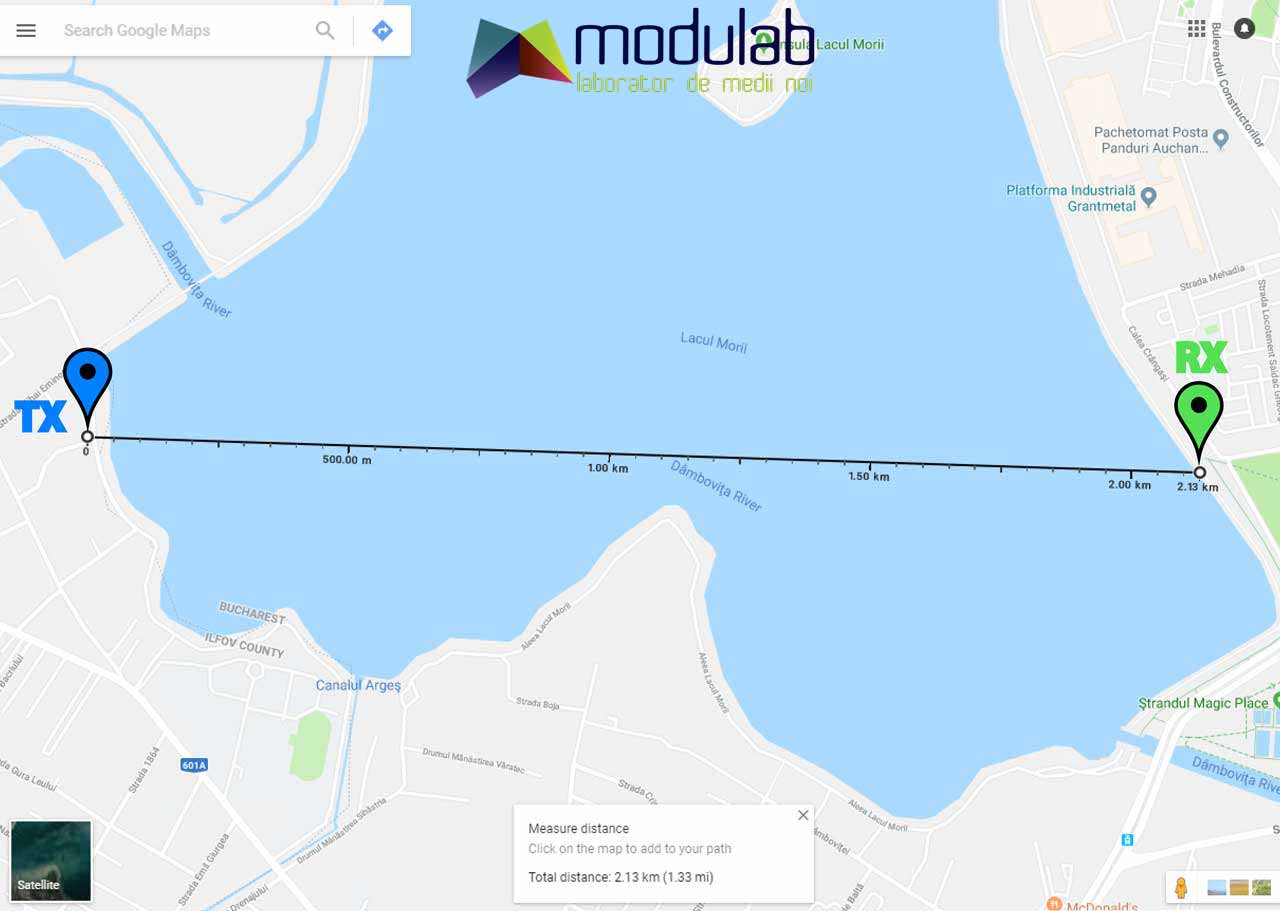At the beginning of 2018 I developed for Modulab a smart ear tag for bison, a wearable localization device for bison from the natural reservation of Armenis, Caras-Severin. The project was developed in a partnership with WWF Romania and its purpose was to investigate the possibility of tracking wild animals (bison) with a custom-made wearable device transmitting localization coordinates using LoRa. This device was desired to replace the current ones which are satellite-based and have a huge maintenance cost.
Product Design
The LoRa-based network of sensors concept was composed of receivers and transmitters, each equipped with a RFM95 radio module and its corresponding antenna. The transmitters were attached to the moving targets (bison) and had to operate in the ultra-low-power mode while the receivers were fixed, hidden in the tree in the areas usually populated by animals. The wearable device from Figure 2 also had an integrated GPS module to determine its position while the fixed device from Figure 1 had a GSM module to push the localization data retrieved via LoRa to a cloud baser server.
So far in the previous paragraph, I have presented the whole concept of this smart ear tag for bison idea. However, in this project, I was only responsible for the investigation of the LoRa technology, its range and operability. I had to design a transmitter device (circuit board including LoRa module, GPS, and MCU) and to write a test code to validate its functionalities in a relevant environment.
PCB Assembly
I designed two variants of boards for the transmitter device, the first from Figure 3 with an external antenna and the second from Figure 4 with a PCB-made antenna. As I have previously done with other projects such as nanodroid, smart cane for VI or SMSGate, I printed the solder paste and soldered the components at the Faculty of Electronics’ Center for Electronic Technology and Interconnection Techniques (UPB-CETTI) as seen in Figure 5.
As sometimes happens, the deadline was approaching for this project, and the embedded C code for the custom-made boards from Figures 4 and 5 failed to be functional. Due to the fact that I urgently needed a functional device to gather some experimental data, I linked the smart ear tag boards with two external development kits with Arduino Nano bootloader (one was an Embeto Electronics nanodroid board) and quickly prototyped the two functional devices from Figures 6 and 7, the first working as a receiver and the second as a transmitter.
In-Field Testing
The first test that I performed was a line of sight range test. This kind of test requires a large plain area where no other objects are located between the receiver and the transmitter. Mill Lake from Bucharest, Romania was a perfect place to run it with the two prototypes from Figures 9 and 10 diametrally opposing. As seen in the map from Figure 8, results revealed a line of sight range of 2.13km.
A second test took place right in Caras-Severin county, in the Natural Reservation Armenis during a field trip expedition with the WWF Romania team. We explored the possibility of having the receiver and transmitter at different altitudes (one over a hill and the other at its base) or of having them both at the same level. Unfortunately only the latter use case resulted in functional communication between the two devices on very short distances of less than 100 meters.
















